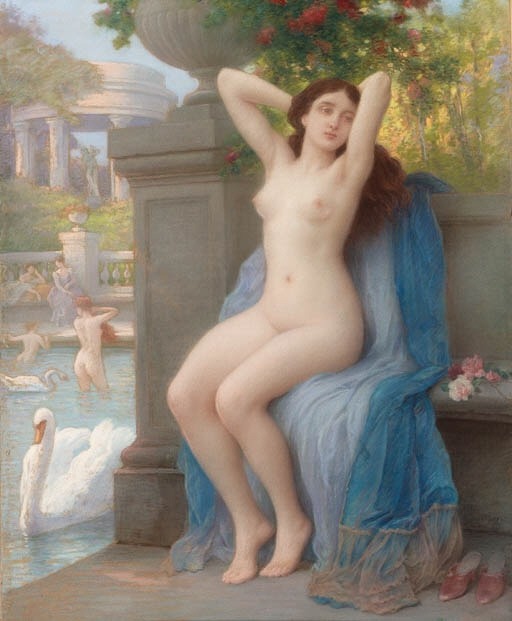#scalbert
Text

"Sleep", painting by J. Scalbert
French vintage postcard
#vintage#tarjeta#briefkaart#postcard#photography#postal#sleep#carte postale#sepia#scalbert#ephemera#historic#french#ansichtskarte#j. scalbert#postkarte#painting#postkaart#photo
23 notes
·
View notes
Text



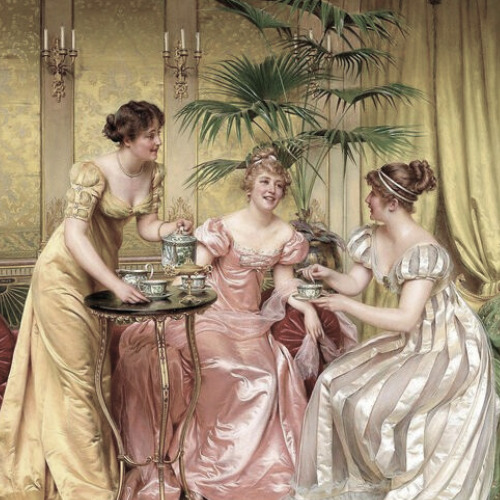





“Women instinctually know how to nourish each other, and just being with each other is restorative”
#artist is sir james jebusa shannon#artist is sandro botticelli#artist is john phillips#artist is frederic soulacroix#artist is vittorio reggiani#artist is jules scalbert#artist is hans zatzka#artist is leopold francois kovalsky#artist is albert-emile artique#art#artedit#art history#arthistoryedit#moodboard
306 notes
·
View notes
Photo






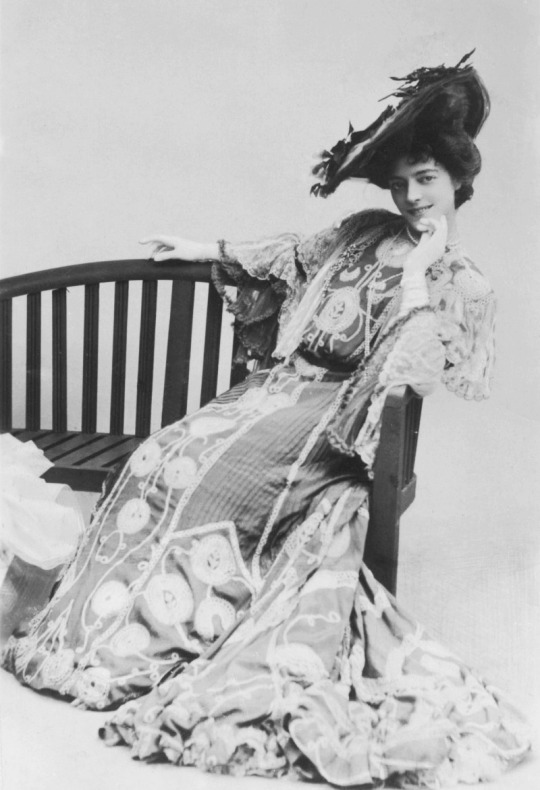
More 1900s (from top to bottom) -
A young woman by Jules Scalbert (Balclis - 16Dec21 auction Lot 317). From invaluable.com-auction-lot-jules-scalbert-a-young-woman-317-c-26b43f2a82; fixed spots & some flaws w Pshop 2442X3502.
1900s Margit Cziráky Princess Esterházy de Galántha with her son Paul by Gyula Benczúr (location ?). From history-of-fashion.tumblr.com/image/154933073819 1108X1920.
1900s Baroness Catherine d'Erlanger by Alice Hughes. From antique-royals.tumblr.com/tagged/vintage 950X1389.
1900s outdoor dress. From antique-royals.tumblr.com/post/163813522158/1900s via pinterest.com/GloccaMoraBird/1900s-dresses/ 591X867.
1900s Vesta Tilley by Foulsham & Banfield. From historicalfashionnerd.tumblr.com/post/169463242046/vesta-tilley-by-foulsham-banfield-1900s via pinterest.com/GloccaMoraBird/1900s-dresses/ 540X782.The silhouette and princess cut suggest 1910.
1900s Ada Reeve by ?. From tumblr.com/fashionsfromthepast 916X1319.
1900s Ada Reeves in picture hat by ?. From tumblr.com/fashionsfromthepast 800X1171.
#1900s fashion#Belle Époque fashion#Edwardian fashion#Jules Scalbert#pouter pigeon silhouettre#close skirt#lace cuffs#Margit Cziráky#feathered hat#bouffant coiffure#lace bertha#Catherine d'Erlanger#Alice Hughes#square neckline#puffed sleeves#flowered hat#net veil#parasol#Vesta Tilley#Foulsham & Banfield#Ada Reeve#blouse#clerical neckline#train
23 notes
·
View notes
Photo

Jules Scalbert (1851-1933) - Im rosengarten
Oil on canvas. 51.2 x 38.2 inches, 130 x 97 cm.
Estimate: €15,000-20,000.
Failed to sell Dorotheum, Vienna, 8 Nov 2022.
31 notes
·
View notes
Text

"The Mirror", painted by J. Scalbert
French vintage postcard
#vintage#tarjeta#old#mirror#briefkaart#postcard#photography#postal#carte postale#j#sepia#scalbert#ephemera#historic#french#ansichtskarte#j. scalbert#postkarte#painted#postkaart#photo
7 notes
·
View notes
Photo

Promenade im Bois de Boulogne in Paris, 1890.
Jules Scalbert, (French, 1851 - 1928)
21 notes
·
View notes
Text
Nutritional Health Benefits of Millets
About Millets
Millets offer nutritional security and there is a need for promoting millets as they are highly nutritious. These have been important food staples in human history, particularly in Asia and Africa. Sorghum and other millets consumption usage as direct food has significantly declined over the past three decades. The decline in demand has led to the decline in millets production considerably in India. Production of sorghum in India has come down from 7 million tonnes during 2010-11 to 4.2 million tonnes during 2015-16; bajra production was reduced from 10.4 million tonnes to 8.1 million tonnes, production of ragi reduced to 2.2 million tonnes to 1.8 million tonnes and small millets production came down to 0.39 million tonnes from 0.44 million tonnes during the same period. According to the FAO statistics, 2017 millets production in the world was Sorghum (Sorghum bicolor (L.) Moench) is the fifth major cereal of the world after maize, paddy, wheat and barley as per FAO production data of 2014. This Nutritional Bulletin includes nutritional profile of Sorghum, Pearl millet, Finger millet, Foxtail millet, Common millet, Little millet, Barnyard millet and Kodo millet. Almost all the millets are used for human consumption in most of the developing countries, but their use has been primarily restricted to animal feed in developed countries. Sorghum and millets are gluten free, hence, are useful dietary cereals. In general millets are rich source of fibre, minerals and B-complex vitamins. High fibre content and presence of some anti-nutritional factors like phytates and tannins in millets affect bioavailability of minerals. Few studies in humans have suggested that absorption of iron tends to be lower from millets than from rice or even wheat. (Rao et al.,1983). Millets are also rich in healthpromoting phytochemicals like polyphenols, lignans, phytosterols, phyto-oestrogens, phytocyanins. These function as antioxidants, immune modulators, detoxifying agents etc. and hence protect against age-related degenerative diseases like cardiovascular diseases (CVD), diabetes, cancer etc. (Rao et al., 2011). Some of the known nutrients vitamins, minerals, essential fatty acids also have benefits in terms of prevention of degenerative diseases besides their known functions of preventing nutritional deficiency diseases. Being non-glutinous, millets are safe for people Executive Summary 6 F Nutritional and Health Benefits of Millets suffering from gluten allergy and celiac disease. They are non-acid forming, easy to digest and non-allergenic (Saleh et al., 2013). Millets have potential for protection against age-onset degenerative diseases. Consumption of millets reduces risk of heart disease, protects from diabetes, improves digestive system, lowers the risk of cancer, detoxifies the body, increases immunity in respiratory health, increases energy levels and improves muscular and neural systems and are protective against several degenerative diseases such as metabolic syndrome and Parkinson’s disease (Manach et al., 2005; Scalbert et al., 2005; Chandrasekara and Shahidi, 2012). The important nutrients present in millets include resistant starch, oligosaccharides, lipids, antioxidants such as phenolic acids, avenanthramides, flavonoids, lignans and phytosterols which are believed to be responsible for many health benefits
Millets are a group of highly variable small seeded grasses, widely grown around the world as cereal crops or grains for fodder and human food. They do not form a taxonomic group, but rather a functional or agronomic one. Millets are important crops in the semi-arid tropics of Asia and Africa (especially in India and Nigeria), with 97% of millet production in developing countries. The crop is favoured due to its productivity and short growing season under dry, high-temperature conditions. The most widely grown millet is pearl millet, which is an important crop in India and parts of Africa. Finger millet, Proso millet, and Foxtail millet are also important crop species. In the developed world, millets are less important. For example, in the United States only Proso millet is significant, and it is mostly grown for bird seed. While millets are indigenous to many parts of the world, it is believed that they had an evolutionary origin in tropical western Africa, as that is where the greatest number of both wild and cultivated forms exist. Millets have been important food staples in human history, particularly in Asia and Africa. They have been in cultivation in East Asia for the last 10,000 years. Sorghum and millets have been important staples in the semi-arid tropics of Asia and Africa for centuries. These crops are still the principal sources of energy, protein, vitamins and minerals for millions of the poorest people in these regions. Sorghum and millets are grown in harsh environments where other crops grow or yield poorly. They are grown with limited water resources and usually without application of any fertilizers or other inputs by a multitude of small-holder farmers in many countries. Therefore, they are mostly consumed by disadvantaged groups; they are often referred to as “coarse grain” or “poor people’s crops”. They are not usually traded in the international markets or even in local markets in many countries. The farmers seldom, therefore, have an assured market in the event of surplus production. The cereals considered in this publication include sorghum, Pearl millet, Finger millet, Foxtail millet, Common millet, Little millet, Barnyard millet and Kodo millet. Teff (Eragrostis tef), which is extensively cultivated in Ethiopia, is not strictly a millet and is therefore not included. Other millets such as fonio (Digitaria exilis) and Job’s tears (Coix lancryma -jobi) are of minor importance.
Major Millets:- Term "major millets" generally refers to the most commonly cultivated and consumed types of millets in the india and world. These includes
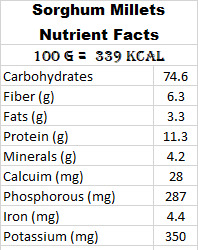

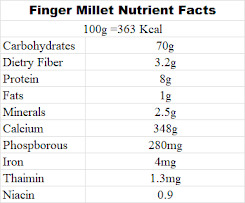
Minor Millets:- minor millets (nutri cereals) are the groups of small seeded cereals belonging to the family Poaceae they are
Foxtail millet (కోరలు)
Kodo millets (ఆరికలు)
Barnyard millet (ఊదాలు)
Little millet (సామలు)
Proso millet (వరిగలు)
Brown top millet (అండు కొర్రలు)
Foxtail Millet, also known as Kangni or Kakum in India, is a nutritious cereal grain that has been a staple food for thousands of years. In recent times, foxtail millet has gained popularity as a healthy alternative to rice and wheat due to its numerous health benefits. Foxtail millets have been cultivated in India for thousands of years and are believed to have originated in China. They were one of the first cereal crops to be cultivated in the country and were widely grown in ancient times. Foxtail millets were an essential part of the diet of people living in the Indus Valley Civilization and were also mentioned in ancient Indian texts like the Rigveda and the Atharvaveda. Foxtail millets are a rich source of protein, dietary fiber, and essential minerals like iron, calcium, and magnesium. They are also gluten-free and low in glycemic index, making them an excellent option for people with gluten intolerance or diabetes. Foxtail millets are also believed to have anti-inflammatory properties and may help in reducing the risk of chronic diseases like heart disease, cancer, and diabetes
Kodo millet, also known as Varagu in Tamil, Arikelu in Telugu, Kodra in Hindi, and Harka in Kannada, is a nutritious grain that is widely cultivated in India. It is a type of small, annual cereal grain that is grown mainly in the arid and semi-arid regions of India. Kodo millet is a gluten-free grain and is rich in nutrients, making it an excellent choice for people who are looking for a healthy alternative to rice or wheat. Kodo millet is a rich source of essential nutrients, including vitamins, minerals, and fiber. It is a good source of protein and is rich in antioxidants. Kodo millet is also high in dietary fiber, which can help improve digestion and promote weight loss. The millet is also low in glycemic index and helps in reducing the risk of diabetes, Kodo millet is an excellent source of iron, which is essential for maintaining healthy blood cells and preventing anemia. It is also a good source of calcium, which is important for maintaining healthy bones and teeth. Additionally, kodo millet contains several B vitamins, including thiamine, riboflavin, and niacin, which are essential for healthy brain function and maintaining energy levels
Little millets, also known as "Kutki" or "Sama" in India, are small, gluten-free grains that have been a part of Indian cuisine for centuries. These tiny grains are packed with nutrition and have numerous health benefits. In this blog, we will explore the origins and benefits of Little millets, as well as their role in Indian cuisine. Little millets are a rich source of dietary fiber, which aids in digestion and helps to regulate bowel movements. They are also high in protein, making them an excellent choice for vegetarians and vegans. additionally, they contain essential minerals like calcium, magnesium, and phosphorus, which help to maintain strong bones and teeth. Little millets are also an excellent source of antioxidants, which help to protect the body from free radical damage
Brown top millet, also known as Korale in Hindi, is a highly nutritious and versatile grain that is gaining popularity in India. It is a type of millet that is commonly grown in India, especially in the southern states of Tamil Nadu, Andhra Pradesh, and Karnataka.Brown top millet is a rich source of essential nutrients such as protein, fiber, iron, magnesium, and B vitamins. It is also gluten-free and low in glycemic index, making it an excellent choice for people with celiac disease or those looking to manage their blood sugar levels, the high fiber content in brown top millet help improve digestion and reduce the risk of colon cancer. It also helps lower cholesterol levels and reduces the risk of heart disease. Additionally, the magnesium content in brown top millet helps regulate blood pressure and improve bone health
Proso millet (Panicum miliaceum L.) is a warm season grass with a growing season of 60–100 days. It is a highly nutritious cereal grain used for human consumption, bird seed, and/or ethanol production. Unique characteristics, such as drought and heat tolerance
Brown top millet contains protein, fibre, and B vitamins, including niacin, thiamin, and riboflavin. It also contains magnesium, phosphorus, and iron. These nutrients improve health. Finally, Brown top millet supports energy generation, cognitive health, immune system function, and red blood cell creation in our body.
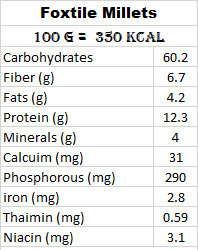
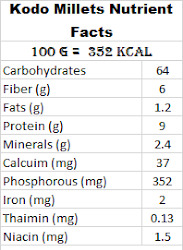




1 note
·
View note
